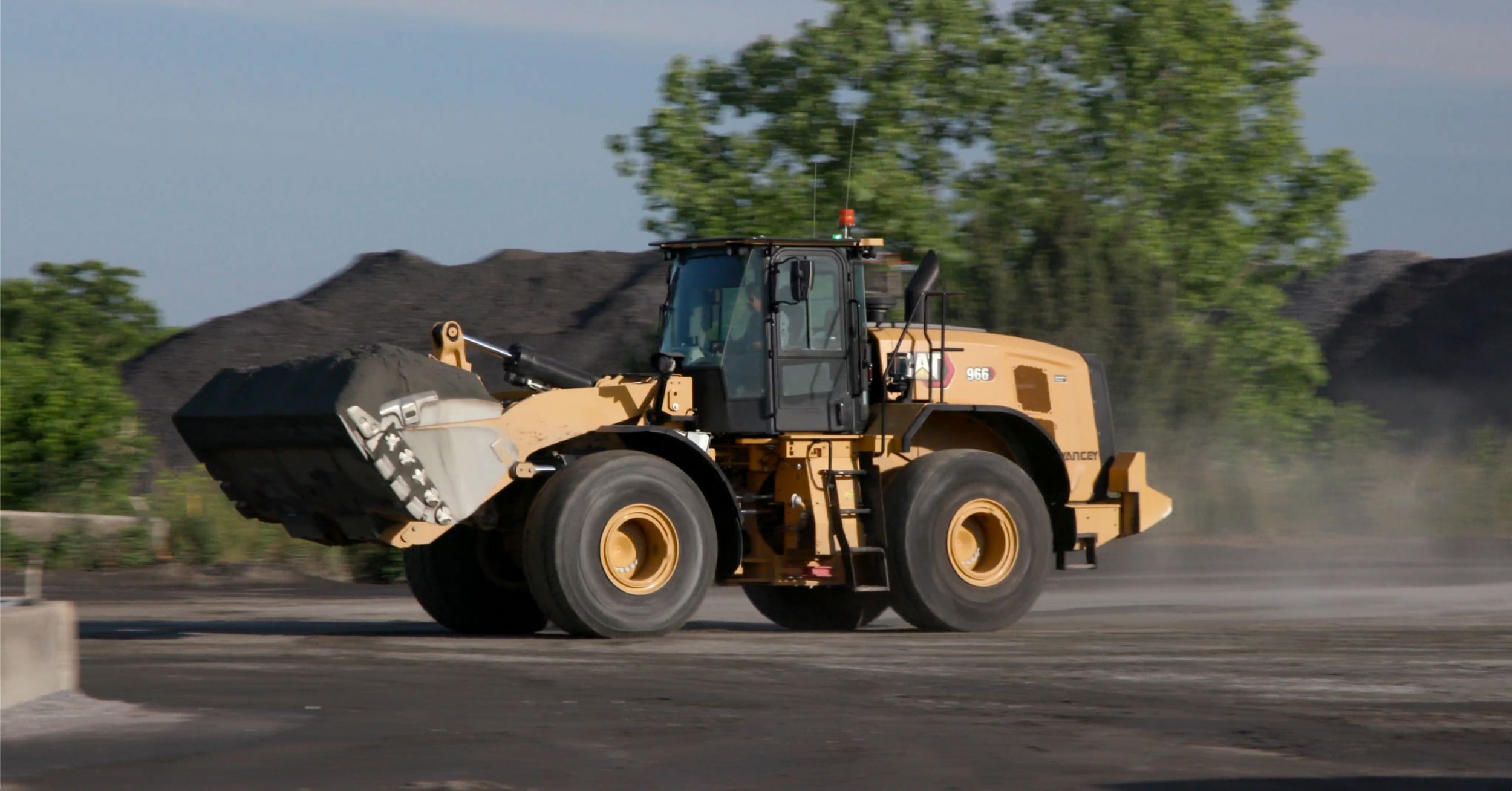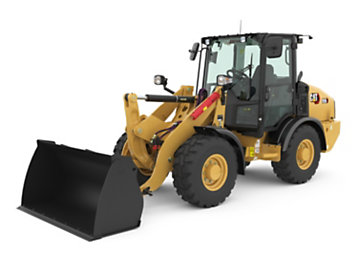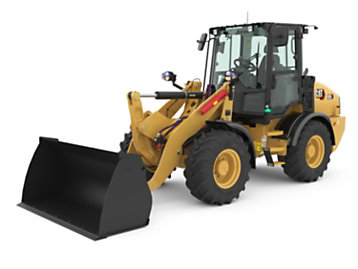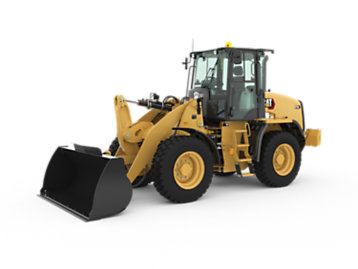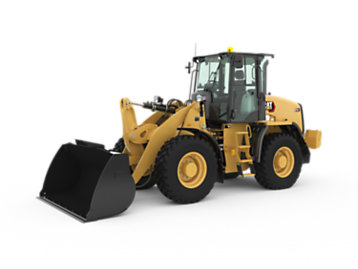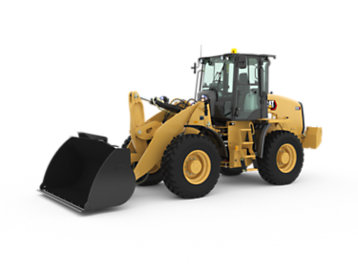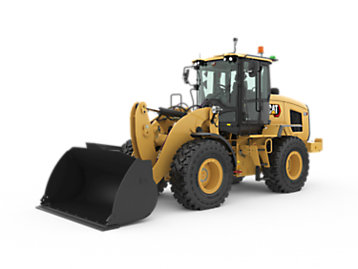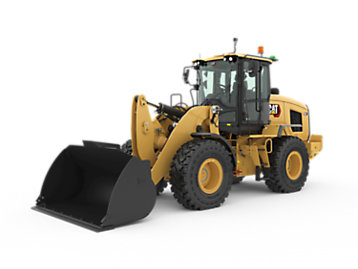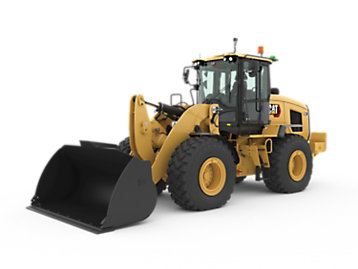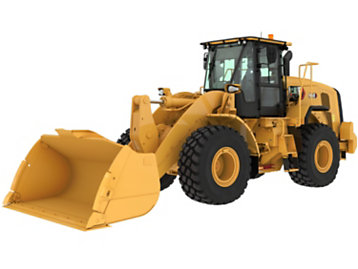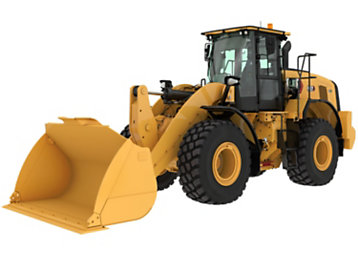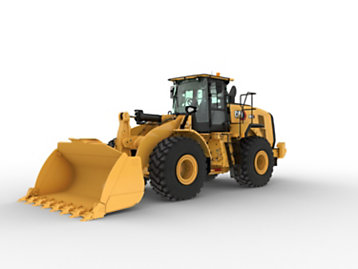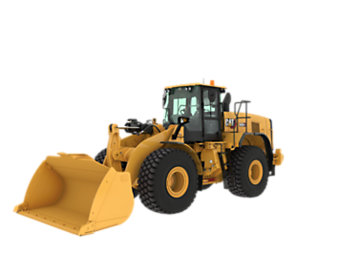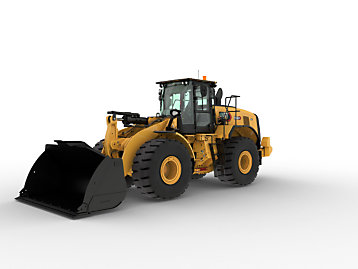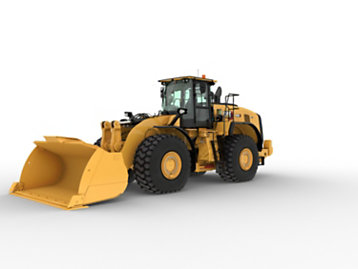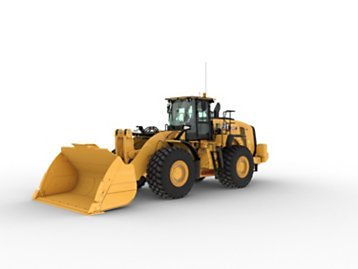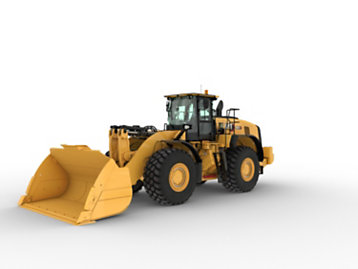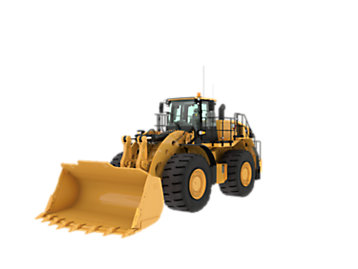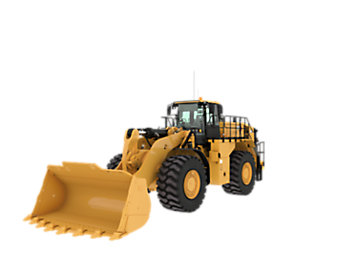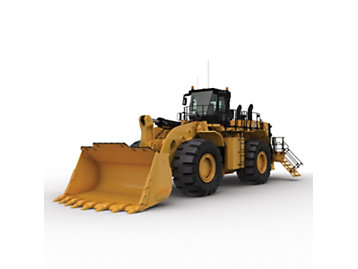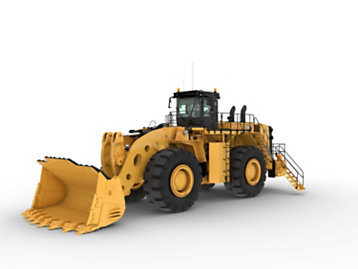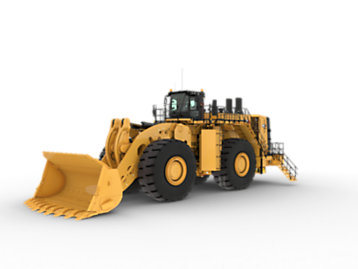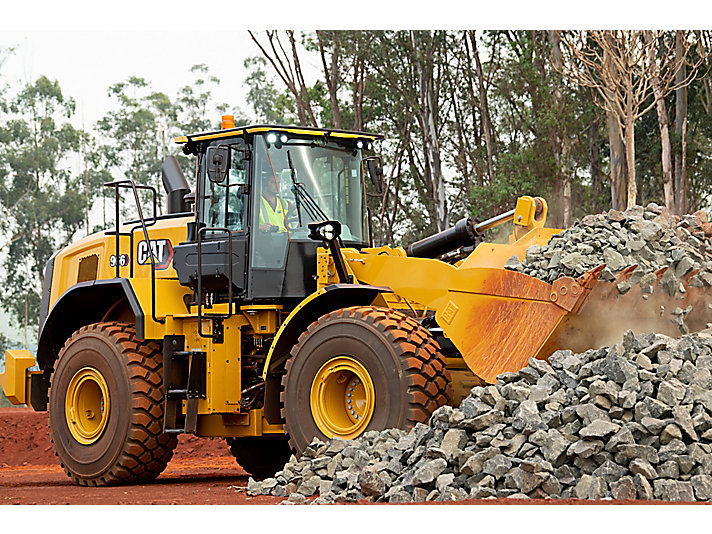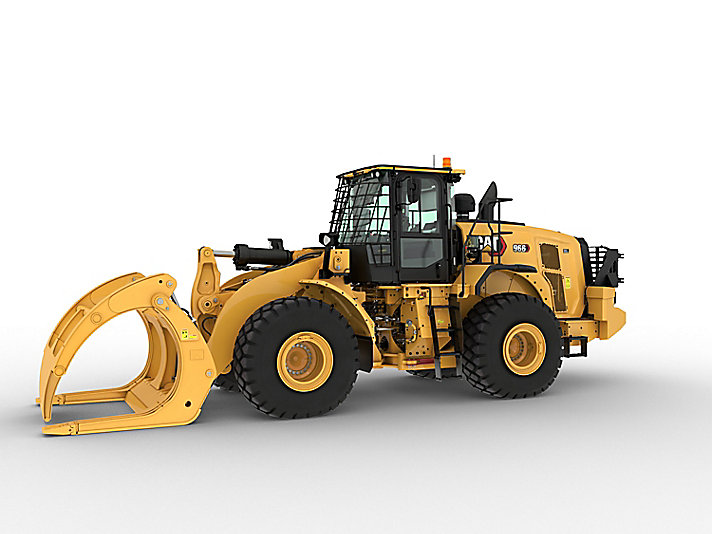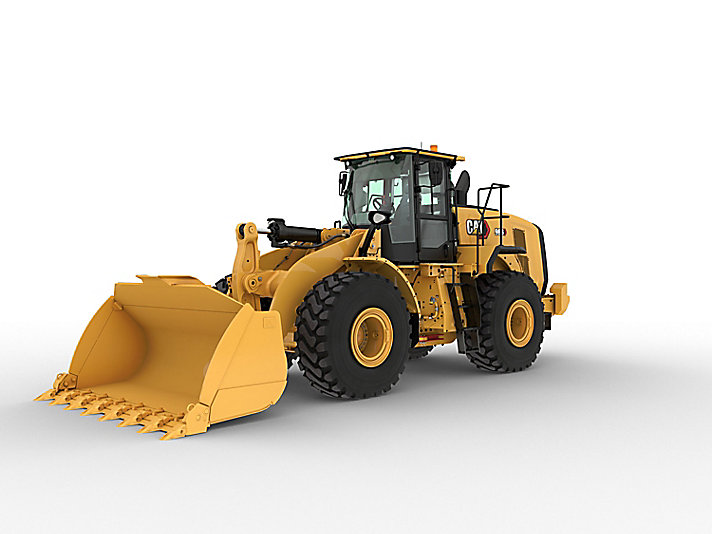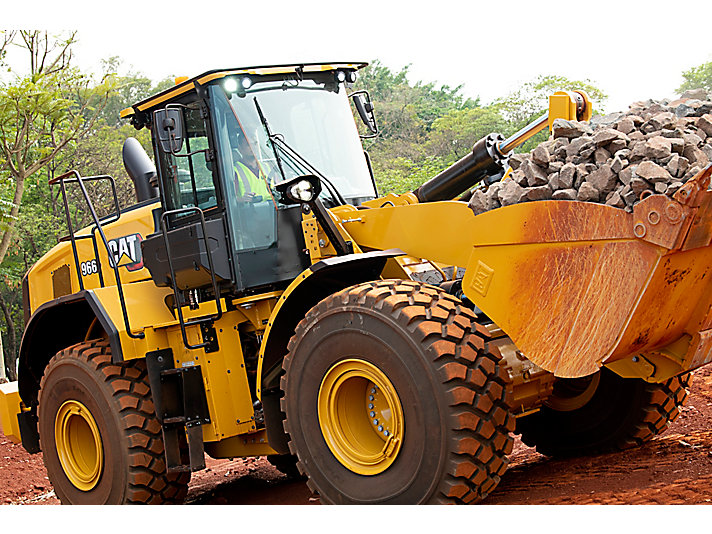Engine
| Engine Power - 1,600 rpm ISO 14396:2002 | 321 hp 239 kW |
| Engine Power - 1,600 rpm ISO 14396:2002 | 325 hp (metric) 325 hp (metric) |
| Engine Model | Cat® C9.3B Cat® C9.3B |
| Gross Power - 1,600 rpm SAE J1995:2014 | 325 hp 242 kW |
| Gross Power - 1,600 rpm SAE J1995:2014 | 329 hp (metric) 329 hp (metric) |
| Net Power - 1,600 rpm ISO 9249:2007, SAE J1349:2011 | 302 hp 222 kW |
| Net Power - 1,600 rpm ISO 9249:2007, SAE J1349:2011 | 302 hp (metric) 302 hp (metric) |
| Engine Torque - 1,200 rpm ISO 14396:2002 | 1313 lbf·ft 1781 N·m |
| Gross Torque - 1,200 rpm SAE J1995:2014 | 1327 lbf·ft 1799 N·m |
| Net Torque - 1,200 rpm ISO 9249:2007, SAE J1349:2011 | 1255 lbf·ft 1702 N·m |
| Displacement | 567.5 in³ 9.3 l |
| Emissions | Meets U.S. EPA Tier 4 Final, EU Stage V, Korea Stage V, China Nonroad Stage IV and Japan 2014 emission standards. Meets U.S. EPA Tier 4 Final, EU Stage V, Korea Stage V, China Nonroad Stage IV and Japan 2014 emission standards. |
| Biodiesel Capability | Up to B20¹ Up to B20¹ |
| Note (2) | ¹Cat diesel engines are required to use ULSD (ultra-low sulfur diesel fuel with 15 ppm of sulfur or less) and are compatible* with ULSD blended with the following lower-carbon intensity fuels**up to: 20% biodiesel FAME (fatty acid methyl ester) ***100% renewable diesel, HVO (hydrotreated vegetable oil) and GTL (gas-to-liquid) fuels. Refer to guidelines for successful application. Please consult your Cat dealer or "Caterpillar Machine Fluids Recommendations" (SEBU6250) for details. *While Caterpillar engines are compatible with these alternative fuels, some regions may not allow their use. **Tailpipe greenhouse gas emissions from lower-carbon intensity fuels are essentially the same as traditional fuels. ***Engines with no aftertreatment devices are compatible with higher blends, up to 100% biodiesel (for use of blends higher than 20% biodiesel, consult your Cat dealer). ¹Cat diesel engines are required to use ULSD (ultra-low sulfur diesel fuel with 15 ppm of sulfur or less) and are compatible* with ULSD blended with the following lower-carbon intensity fuels**up to: 20% biodiesel FAME (fatty acid methyl ester) ***100% renewable diesel, HVO (hydrotreated vegetable oil) and GTL (gas-to-liquid) fuels. Refer to guidelines for successful application. Please consult your Cat dealer or "Caterpillar Machine Fluids Recommendations" (SEBU6250) for details. *While Caterpillar engines are compatible with these alternative fuels, some regions may not allow their use. **Tailpipe greenhouse gas emissions from lower-carbon intensity fuels are essentially the same as traditional fuels. ***Engines with no aftertreatment devices are compatible with higher blends, up to 100% biodiesel (for use of blends higher than 20% biodiesel, consult your Cat dealer). |
| Gross Torque @ 1,200 rpm – SAE J1995:2014 | 1327 lb/ft 1799 N·m |
| Engine Torque @ 1,200 rpm – ISO 14396:2002 | 1313 lb/ft 1781 N·m |
| Note (3) | Cat diesel engines are required to use ULSD (ultra-low sulfur diesel fuel with 15 ppm of sulfur or less) or ULSD blended with the following lower-carbon intensity fuels up to: • 20% biodiesel FAME (fatty acid methyl ester)* • 100% renewable diesel, HVO (hydrogenated vegetable oil) and GTL (gas-to- liquid) fuels Refer to guidelines for successful application. Please consult your Cat dealer or “Caterpillar Machine Fluids Recommendations” (SEBU6250) for details. * Engines with no aftertreatment devices can use higher blends, up to 100% biodiesel. Cat diesel engines are required to use ULSD (ultra-low sulfur diesel fuel with 15 ppm of sulfur or less) or ULSD blended with the following lower-carbon intensity fuels up to: • 20% biodiesel FAME (fatty acid methyl ester)* • 100% renewable diesel, HVO (hydrogenated vegetable oil) and GTL (gas-to- liquid) fuels Refer to guidelines for successful application. Please consult your Cat dealer or “Caterpillar Machine Fluids Recommendations” (SEBU6250) for details. * Engines with no aftertreatment devices can use higher blends, up to 100% biodiesel. |
| Displacement | 9.3 L 9.3 L |

